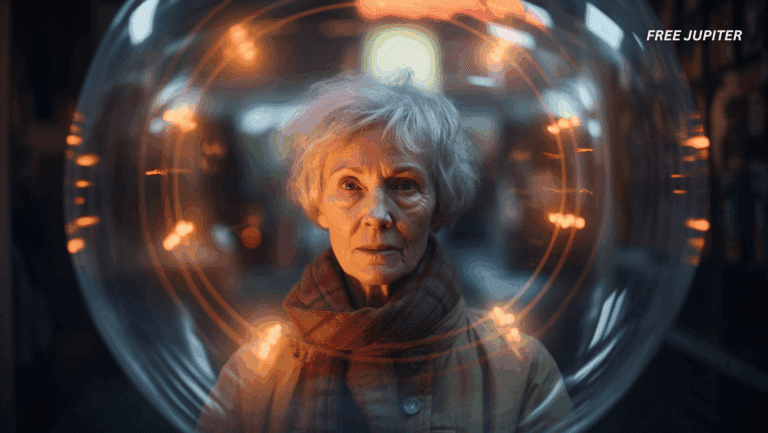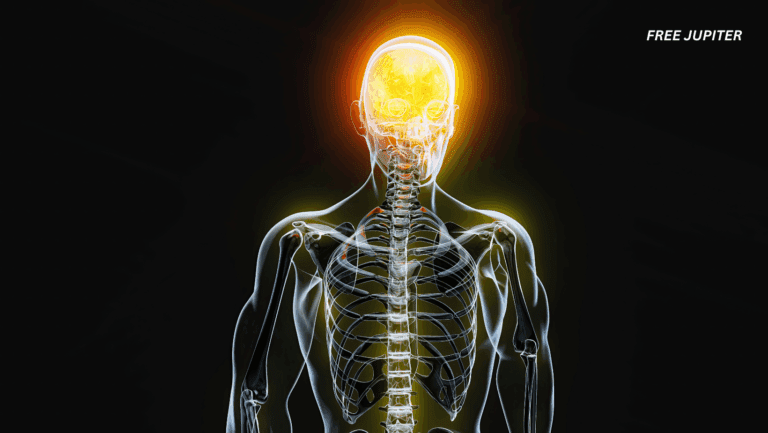In recent years, more and more adults are discovering they are on the autism spectrum. These are people who lived for decades without ever being diagnosed. They held jobs, formed relationships, and lived daily life, never suspecting they might be neurodivergent. This rise in adult diagnoses is not a sudden epidemic or a spike in late-onset autism. Instead, it’s the result of better awareness, evolving diagnostic criteria, and a growing understanding of how autism presents differently across individuals. The phenomenon is reshaping how society views neurodiversity.
Autism Was Historically Seen as a Childhood Condition
For decades, autism was considered a childhood disorder. Diagnostic tools were mostly developed for young boys showing clear developmental delays or communication difficulties. This narrow definition excluded many individuals, especially girls and those with less visible traits. As a result, entire generations of people were overlooked. They adapted, masked symptoms, or were misdiagnosed with anxiety or depression. Now that the definition has expanded, more adults are realizing they were never “just awkward” or “too sensitive.” They were autistic and simply never told.
Diagnostic Criteria Have Evolved
The criteria used to diagnose autism have changed significantly. The Diagnostic and Statistical Manual of Mental Disorders once separated conditions like Asperger’s syndrome and pervasive developmental disorder. These are now grouped under the umbrella of autism spectrum disorder. This broader framework allows for more nuanced diagnoses. Adults who never fit the rigid, earlier profiles now find validation. They can finally put a name to lifelong challenges with social interactions, sensory processing, and routines. Clinicians now look for different expressions of autism beyond the childhood lens.
Many People Learn to Mask Their Symptoms
One major reason autism went undetected in many adults is masking. Masking means consciously or unconsciously hiding autistic traits to blend in. This can involve mimicking facial expressions, rehearsing conversations, or suppressing stimming behaviors. Over time, masking becomes exhausting. Many adults reach a breaking point. They feel burnt out, emotionally drained, or confused about why they are constantly anxious in social settings. The quest to find answers often leads to an autism assessment. For some, it’s a relief to understand their lifelong exhaustion.
Women and Nonbinary People Are Especially Overlooked
Research is now catching up to the fact that autism often presents differently in women and nonbinary individuals. These groups are underdiagnosed because their symptoms don’t match the “classic” male presentation. Many women are social chameleons. They excel at masking and often get labeled as shy, dramatic, or obsessive. Some develop eating disorders or struggle with identity. Nonbinary individuals may also experience compounded challenges, especially when navigating gender norms in a neurotypical society. Their diagnoses are often delayed because the diagnostic process wasn’t built with them in mind.
Social Media Has Sparked Self-Discovery
Online platforms like TikTok, Instagram, and Reddit have created spaces for autistic adults to share their experiences. These first-person stories often resonate deeply with undiagnosed individuals. They see someone describe a sensory meltdown or social confusion and think, “That sounds like me.” This sparks curiosity and self-reflection. Many people pursue professional evaluations after seeing relatable content. These platforms are bridging the gap between medical literature and real life. They provide emotional validation and community for people who have always felt different but never knew why.
Autism Misdiagnoses Are Common
Before getting diagnosed with autism, many adults receive other mental health diagnoses. Anxiety, depression, obsessive-compulsive disorder, and borderline personality disorder are common. While these conditions can co-occur with autism, they often mask it. Treatments aimed solely at anxiety or depression may not address the underlying neurodivergence. This mismatch can lead to years of ineffective therapy. Once autism is recognized, people often feel seen in a way they never did before. It reframes their mental health journey and helps them understand the root of their struggles.
Read More: You Might Be an Anxious Introvert If You Catch Yourself Doing These 15 Things
Late Diagnosis Brings a Mix of Emotions
For many adults, getting diagnosed is both empowering and overwhelming. On one hand, it brings validation. They finally understand why they felt out of step with others. On the other hand, it can stir grief. Some mourn the years spent confused or misunderstood. Others feel anger at being misdiagnosed or unsupported. Still, many describe the experience as life-changing. They begin to advocate for themselves, set better boundaries, and seek community. A late diagnosis doesn’t erase past pain, but it offers clarity and direction.

Workplace Challenges Prompt Assessment
Some adults reach a tipping point at work. They struggle with office politics, unspoken rules, or sensory overload. They might find meetings confusing or feel drained by casual conversations. These ongoing challenges often lead to burnout. After exploring the reasons behind their difficulties, some seek an autism assessment. A diagnosis can help them advocate for workplace accommodations. It can also shift how they view their own productivity and communication. Instead of forcing themselves to meet neurotypical standards, they learn to work with their own rhythms.
Parenting a Child With Autism Can Be Eye-Opening
Interestingly, many adults are diagnosed after their child receives an autism diagnosis. As they learn more about the condition to support their child, they recognize similar patterns in themselves. They see their own sensory quirks, rigid routines, or social confusion mirrored in their child. This recognition leads them to seek their own evaluation. In many cases, understanding their own autism helps them become more empathetic and patient parents. It becomes a shared journey of discovery and growth for the whole family.
Diagnostic Resources Are More Available
Access to autism assessments has improved in some regions. There are now clinicians who specialize in adult diagnoses. Online self-assessments and telehealth services have also expanded access. While the process can still be long and expensive, more adults are finding ways to get evaluated. Public awareness campaigns have also reduced stigma. Being autistic is no longer viewed solely as a deficit. It is increasingly recognized as a difference in cognition and perception, not a disorder to be fixed. This shift has encouraged more people to seek answers.
Autism Is No Longer a Dirty Word
Cultural perceptions of autism are shifting. It is no longer just seen through the lens of disability or childhood tragedy. Autistic adults are reclaiming the narrative. They share their strengths, creativity, and unique worldviews. This new perspective encourages others to explore their neurodivergence without shame. Terms like “neurodivergent” and “autistic pride” reflect this evolving landscape. Diagnosis is no longer a label to hide but a key to self-understanding. Many adults find community, purpose, and pride through their diagnosis.

The Pandemic Led to Introspection
The COVID-19 pandemic triggered massive lifestyle changes. With social gatherings paused and remote work normalized, many adults had time to reflect. They noticed how much easier life felt without constant social obligations. Some realized how much energy they had been spending trying to “pass” as neurotypical. This break from routine led many to question their social behaviors, sensory needs, and mental fatigue. For some, this introspection uncovered long-standing signs of autism. They sought a diagnosis as a way to make sense of their inner lives.
Not All Adults Want a Diagnosis
While awareness has grown, stigma around autism remains. Some adults hesitate to get diagnosed out of fear they’ll be treated differently. Others worry it will impact job prospects or relationships. However, the tide is shifting. Neurodiversity advocacy has entered the mainstream. Schools, workplaces, and media are starting to celebrate different ways of thinking. Diagnosis is increasingly seen as a tool for empowerment. It helps people understand their limits and leverage their strengths. For many, it’s the first step toward self-acceptance.
Misconceptions About Autism Persist
Despite increased awareness, myths still cloud public understanding of autism. Many people think it only affects children or always involves intellectual disability. Others assume autistic people lack empathy, which is simply untrue. These misconceptions delay diagnosis and feed harmful stereotypes. Education is vital to challenge these myths. When more adults share their stories, the public begins to see autism’s true diversity. It is a spectrum, not a single mold. Recognizing this helps break down barriers for undiagnosed adults.
Autism Is More Common Than Previously Thought
Recent studies suggest that autism is more common than once believed. The Centers for Disease Control and Prevention now estimates that 1 in 36 children are diagnosed with autism. If many adults were never diagnosed as children, it means there’s a vast population of undiagnosed autistic adults. As more seek evaluations, society begins to grasp the real scope of neurodiversity. This realization has implications for public health, education, and employment. It forces institutions to consider how inclusive they truly are.
What a Diagnosis Means for Adults
Receiving an autism diagnosis as an adult does not change who a person is. Instead, it offers clarity. It explains patterns of behavior, past struggles, and hidden strengths. It can also open doors to new support systems. Adults can seek therapy, occupational help, or workplace accommodations tailored to their needs. More importantly, they can begin to shed internalized shame or self-doubt. Knowing they are autistic gives many the freedom to live more authentically. They stop pretending to be someone they are not.
Read More: New Discovery Prompts Scientists to Warn of Escalating Brain Health Threat
Embracing Autism
The rise in adult autism diagnoses is not a trend or a mistake. It reflects a deeper understanding of what autism really is and who it affects. Diagnosis is not a cure, nor is it an endpoint. It’s a beginning. It marks the start of a more honest and compassionate life. As stigma fades and understanding grows, more adults will find the courage to ask, “Could this be me?” For many, the answer will finally make everything make sense.
Featured image: Freepik.
Friendly Note: FreeJupiter.com shares general information for curious minds. Please fact-check all claims and double-check health info with a qualified professional. 🌱










